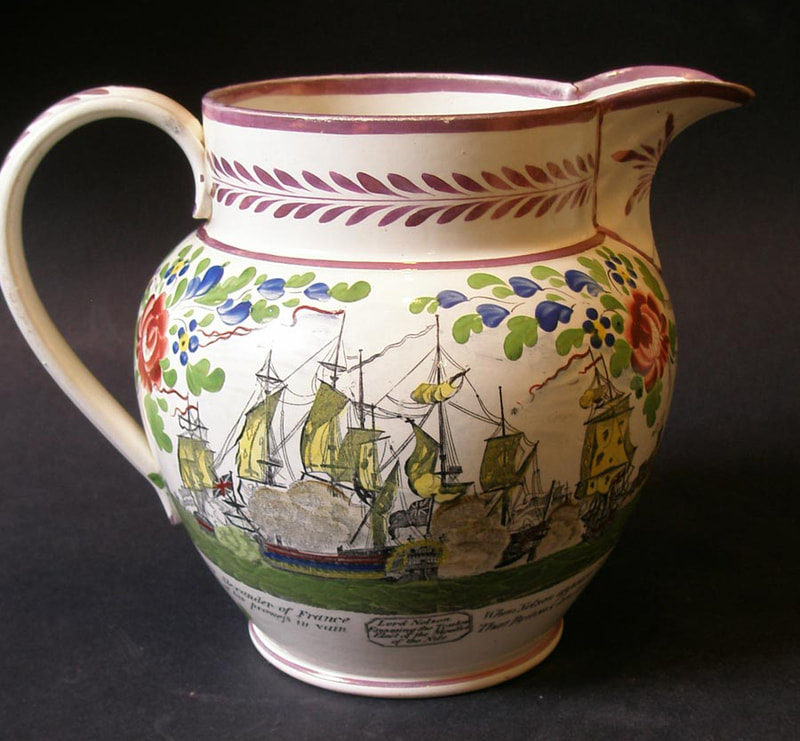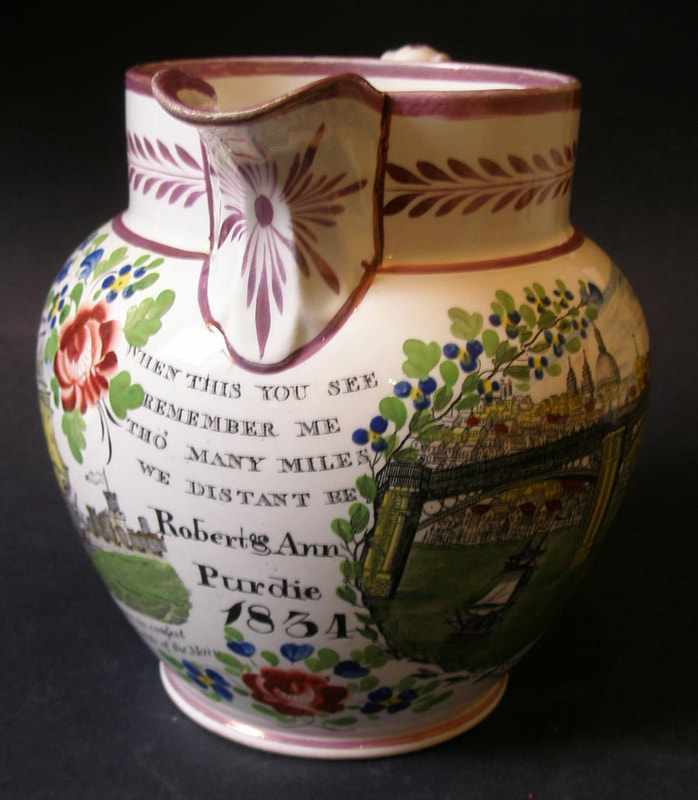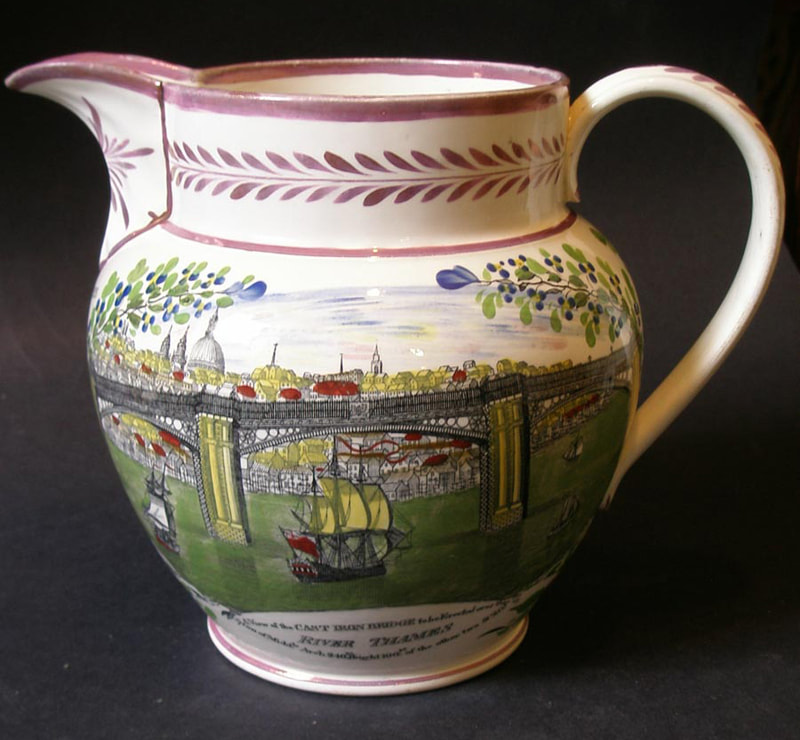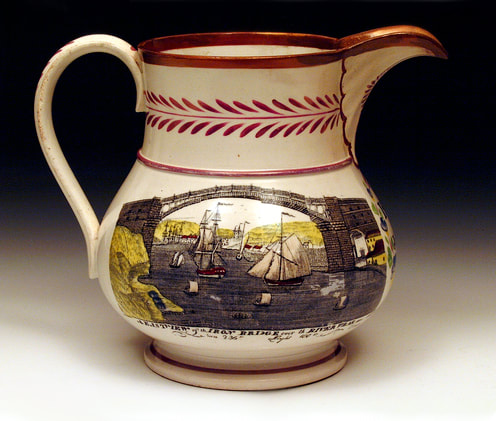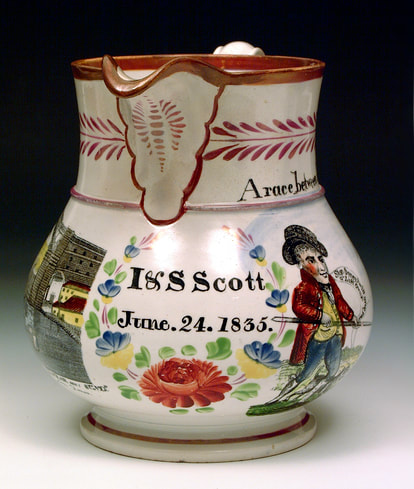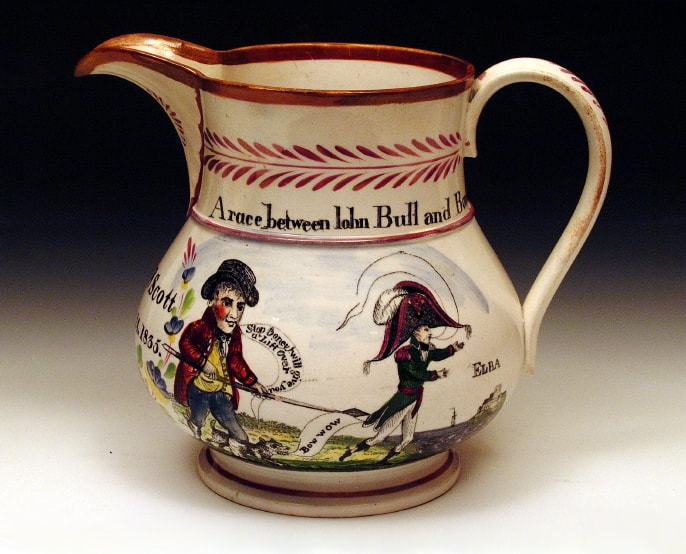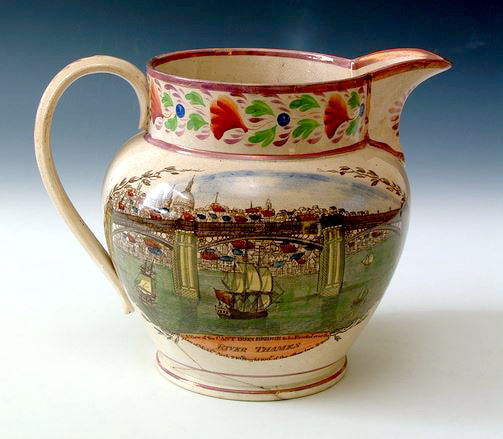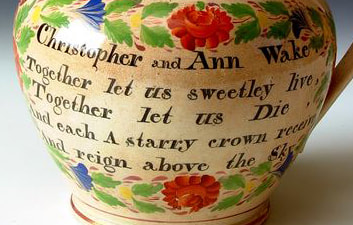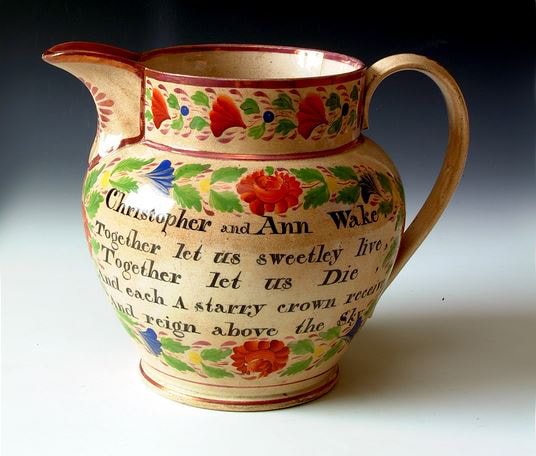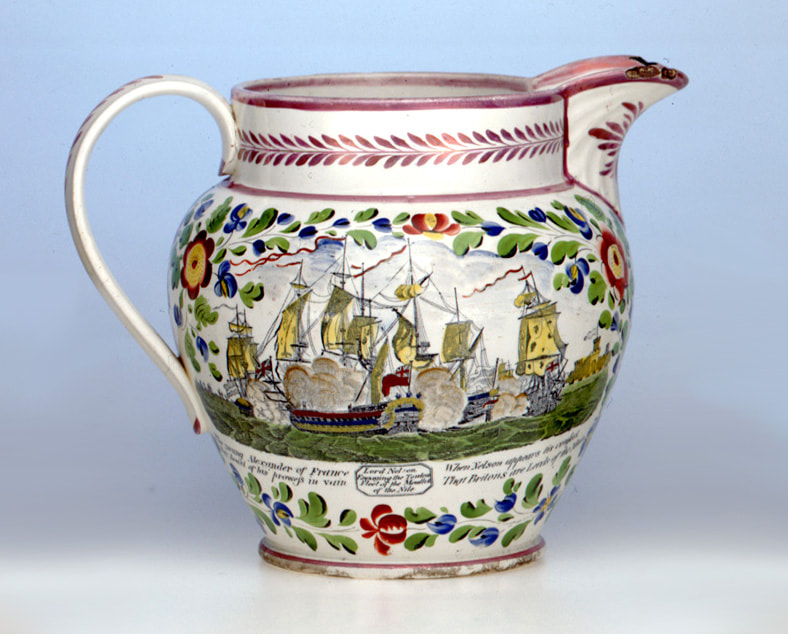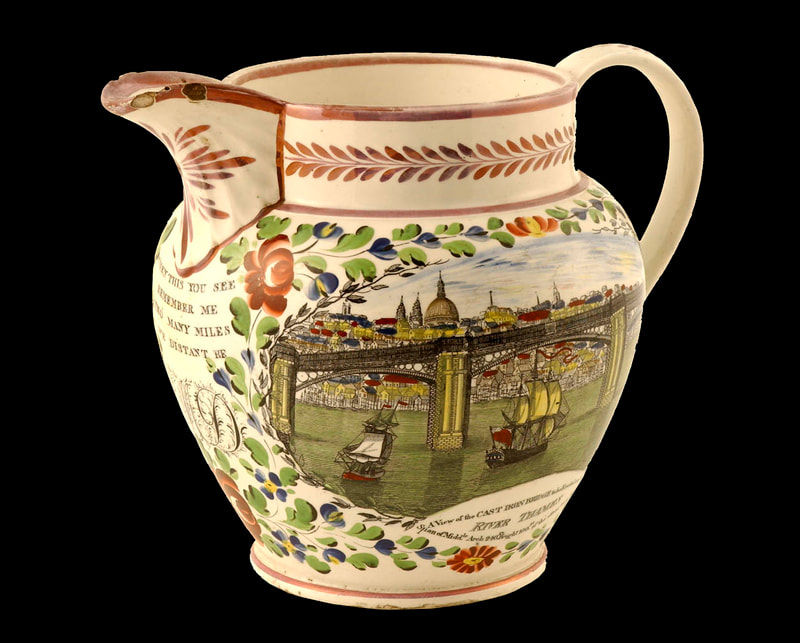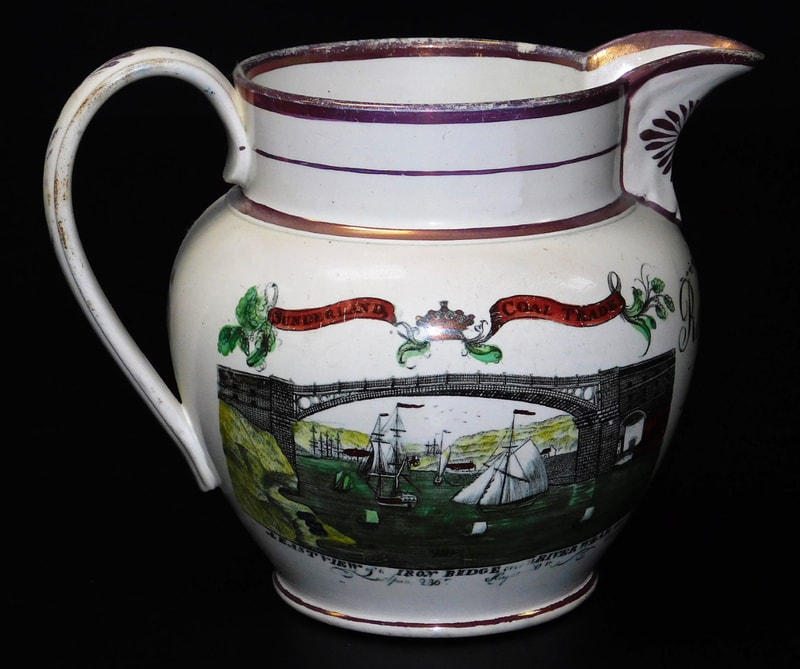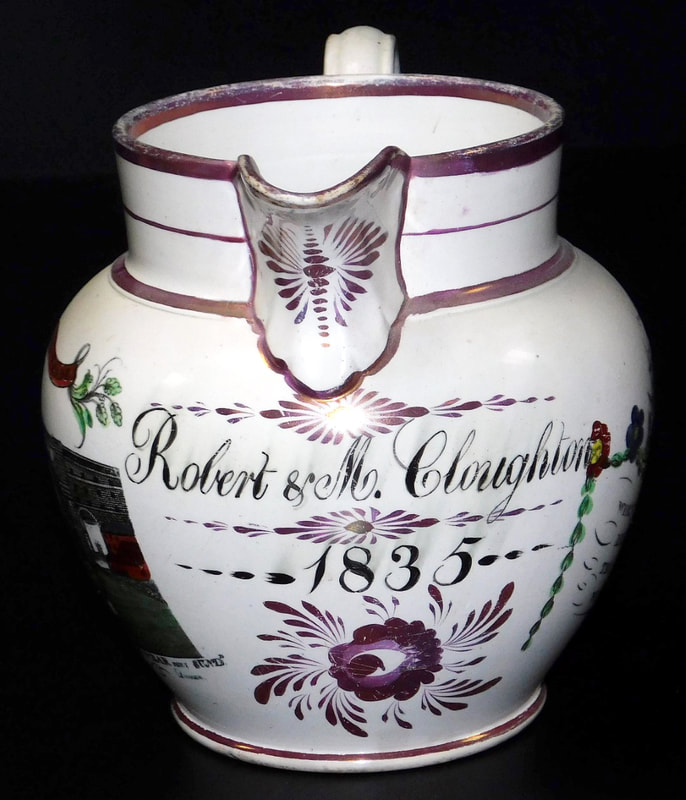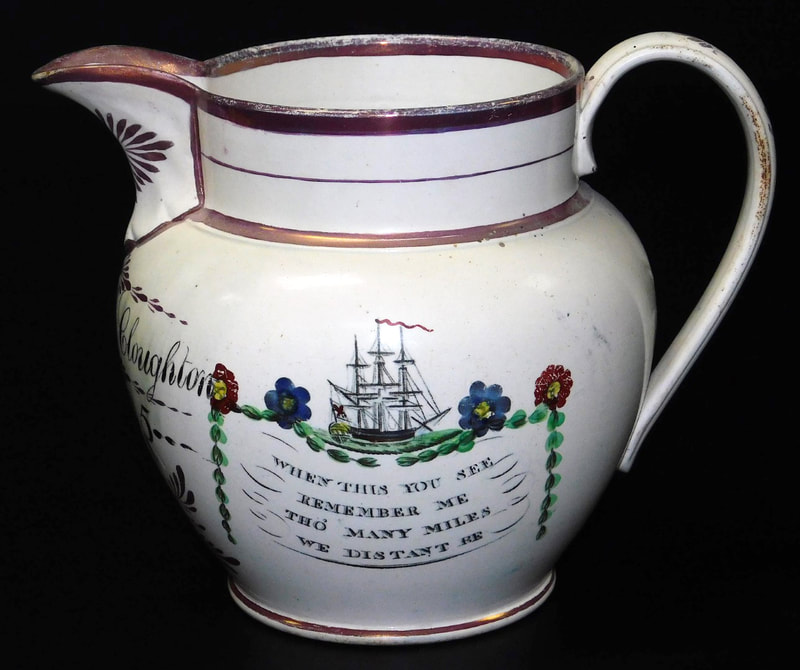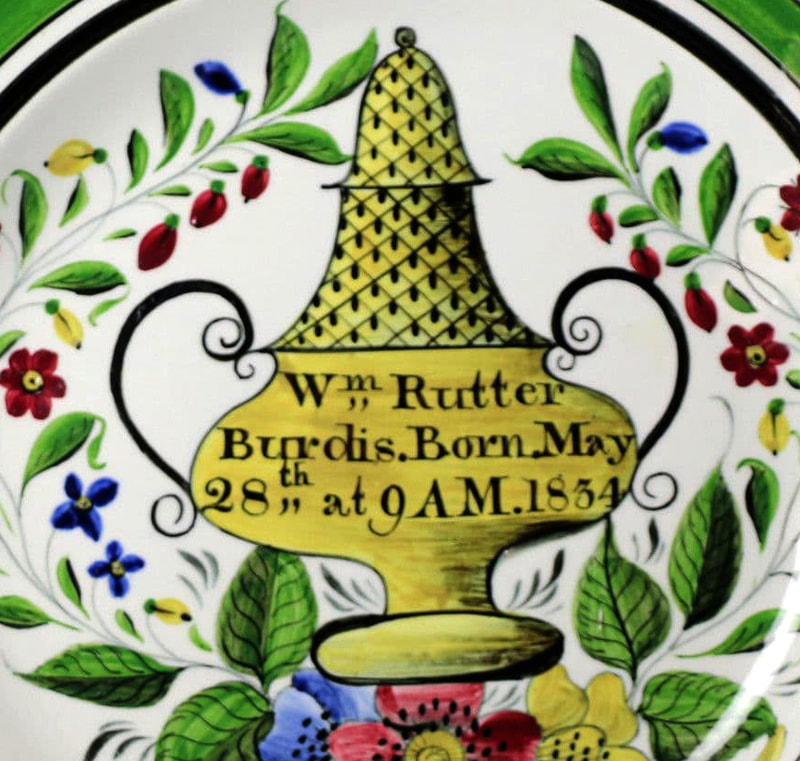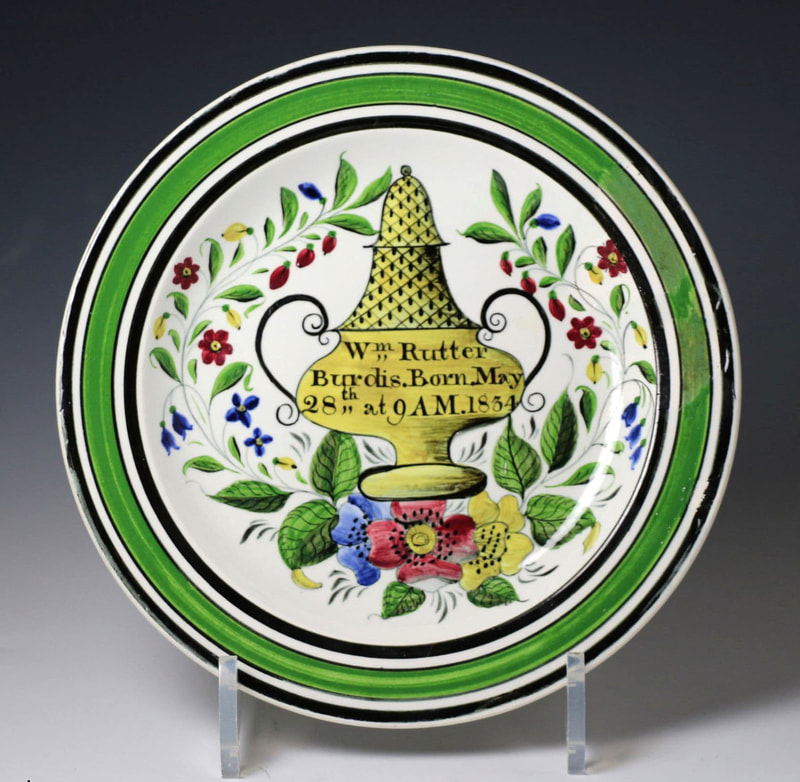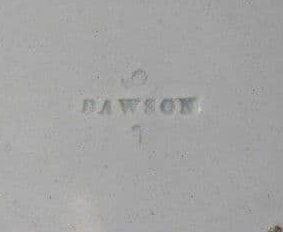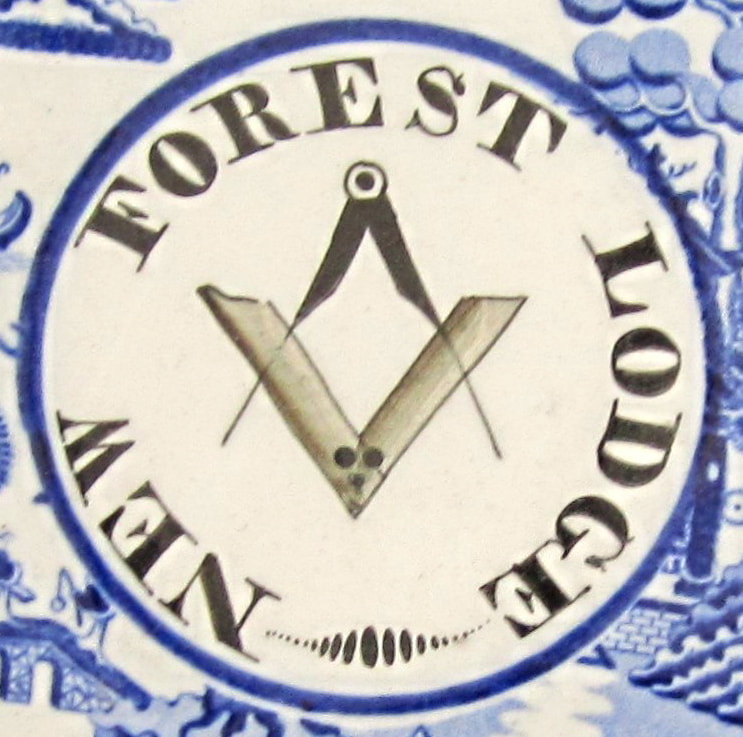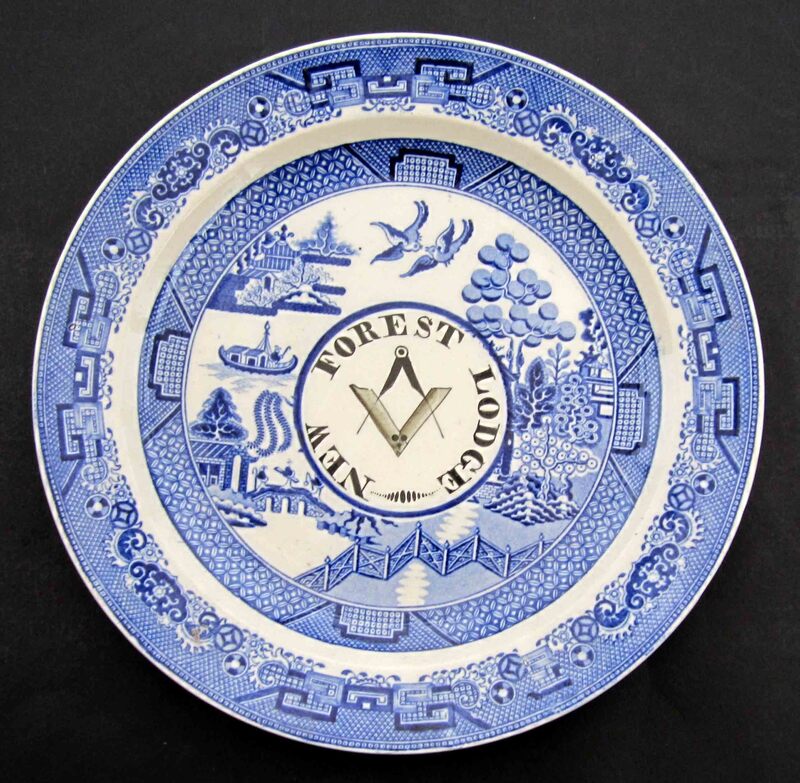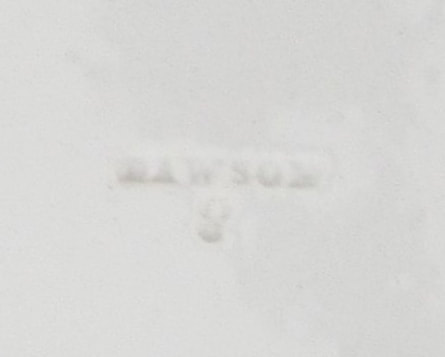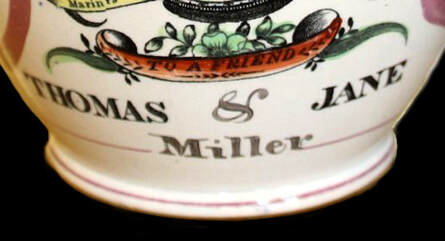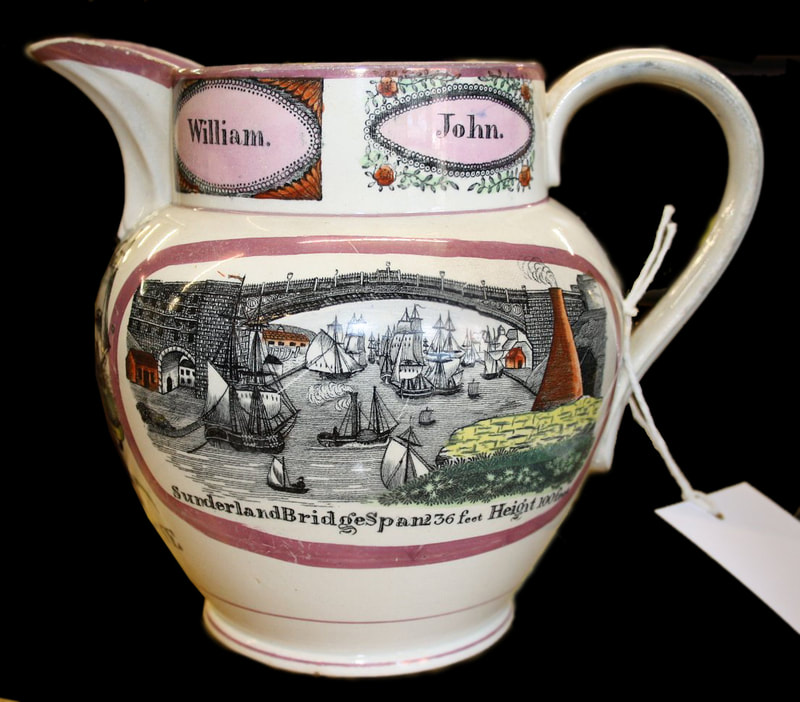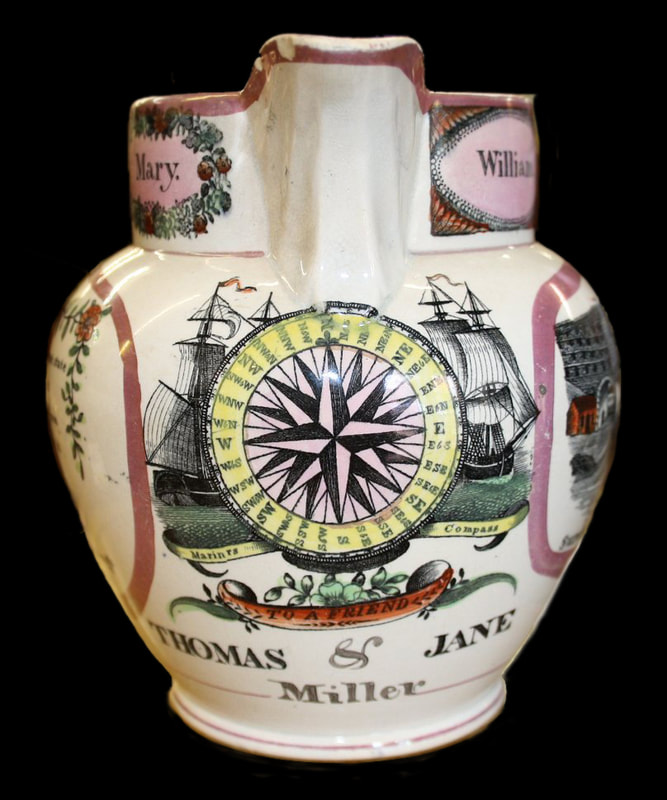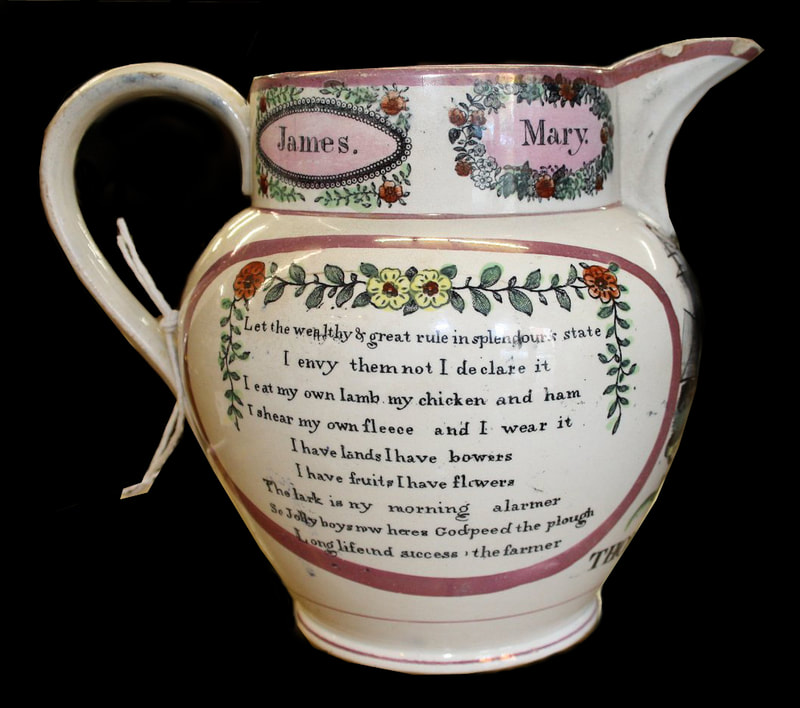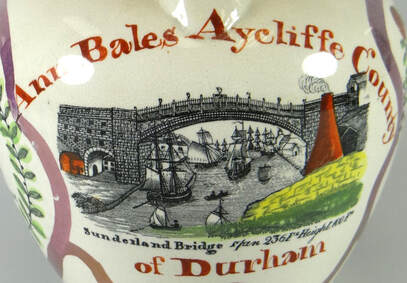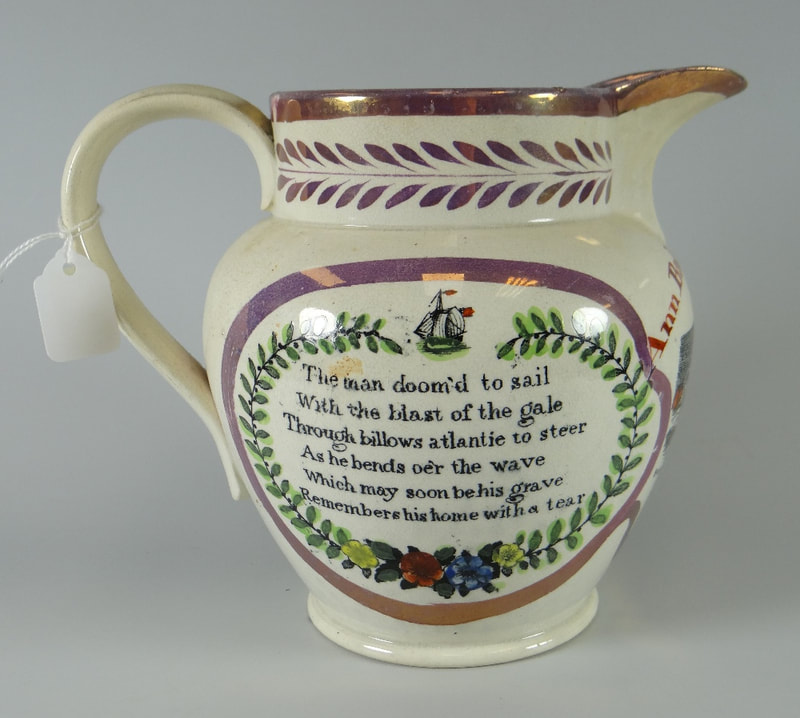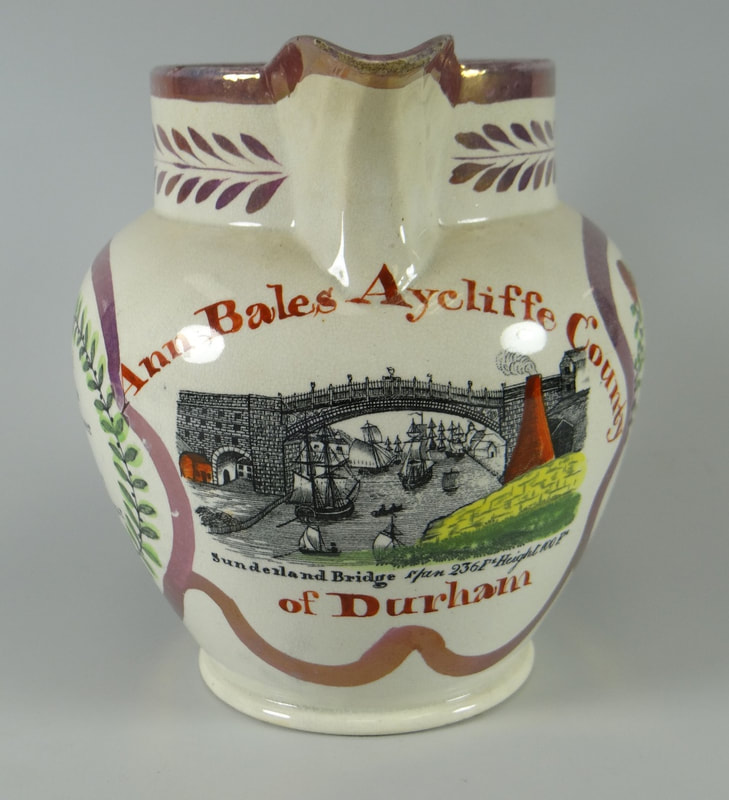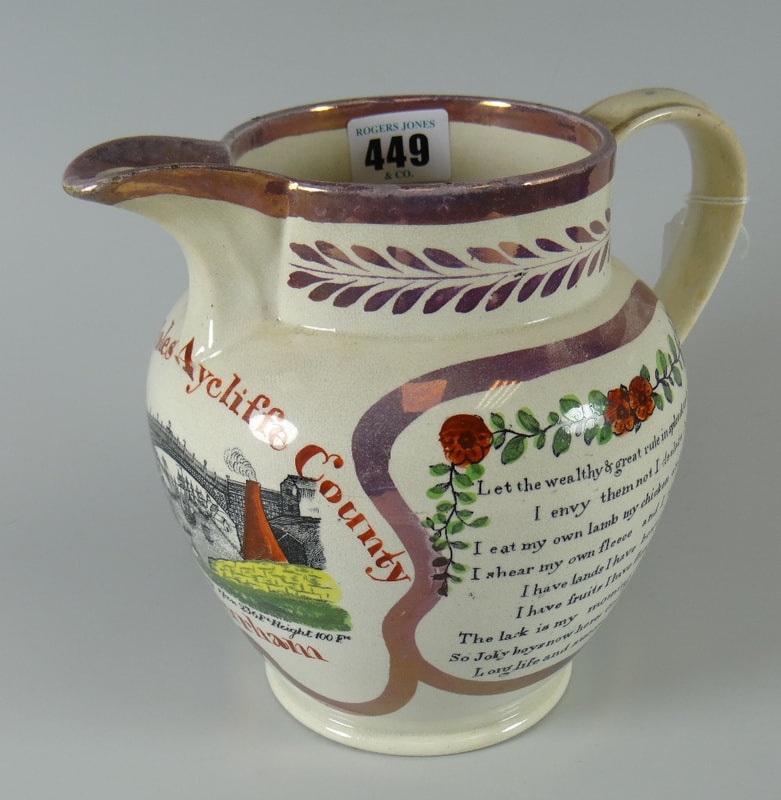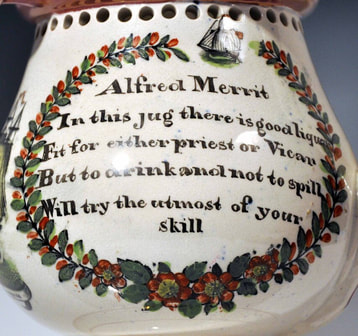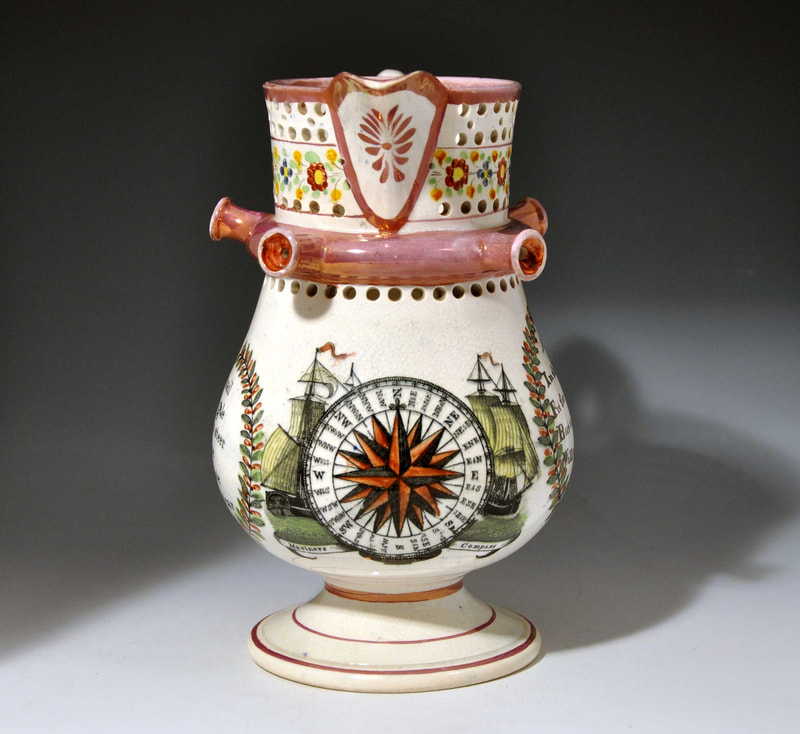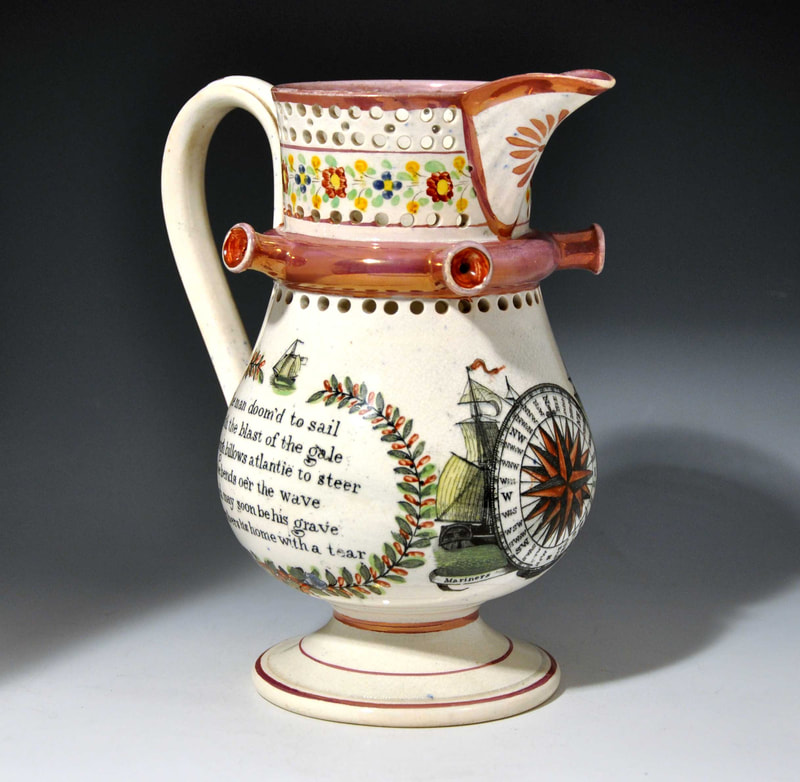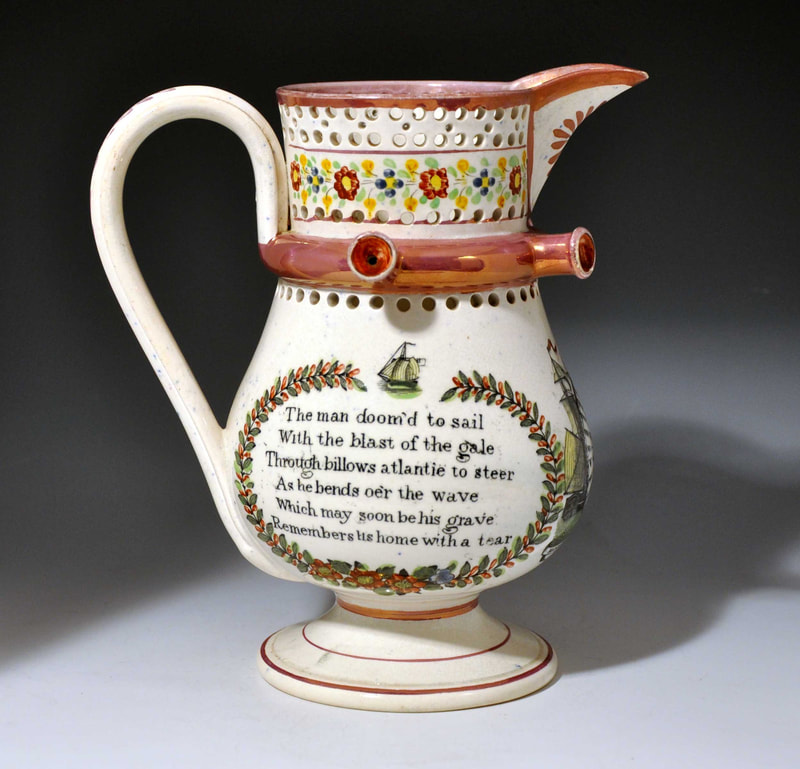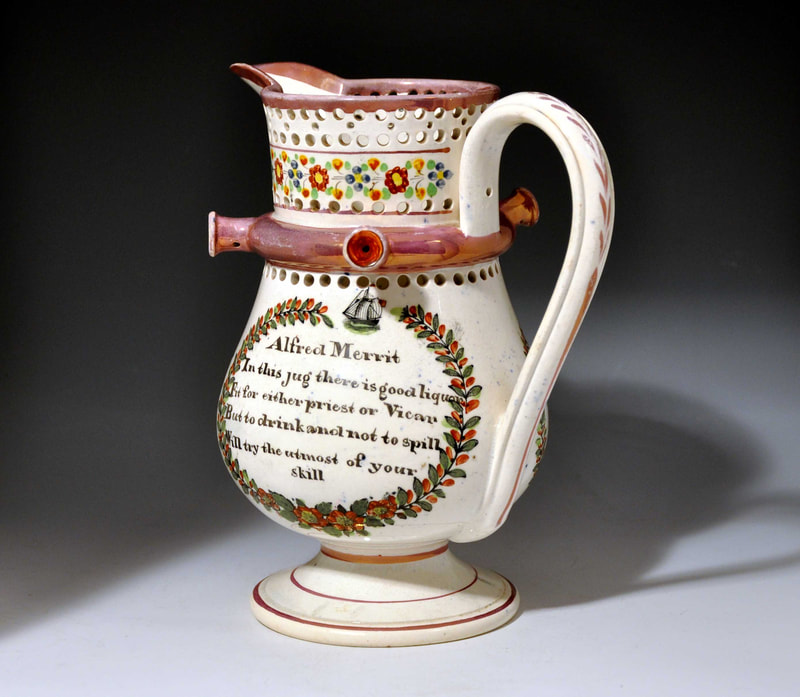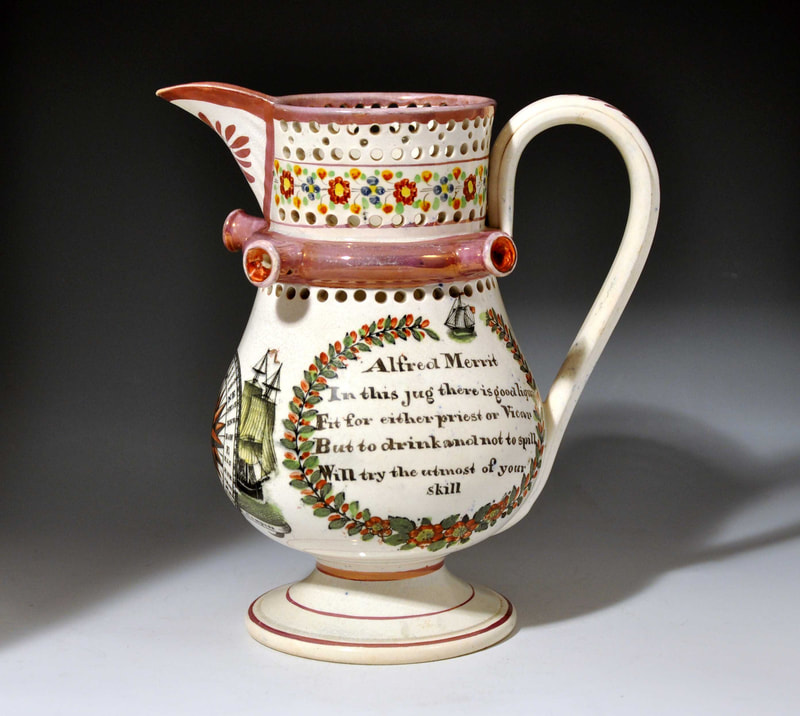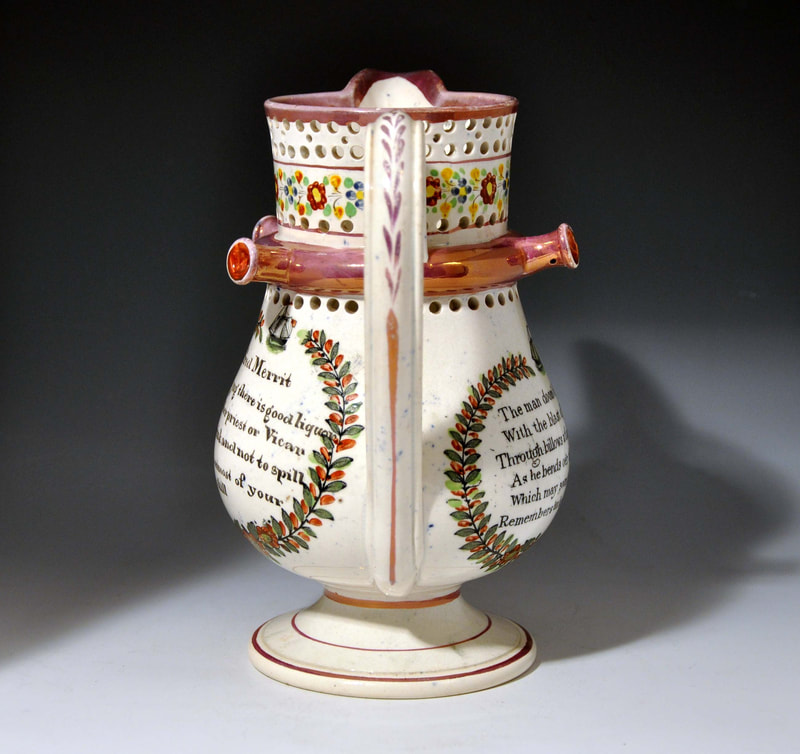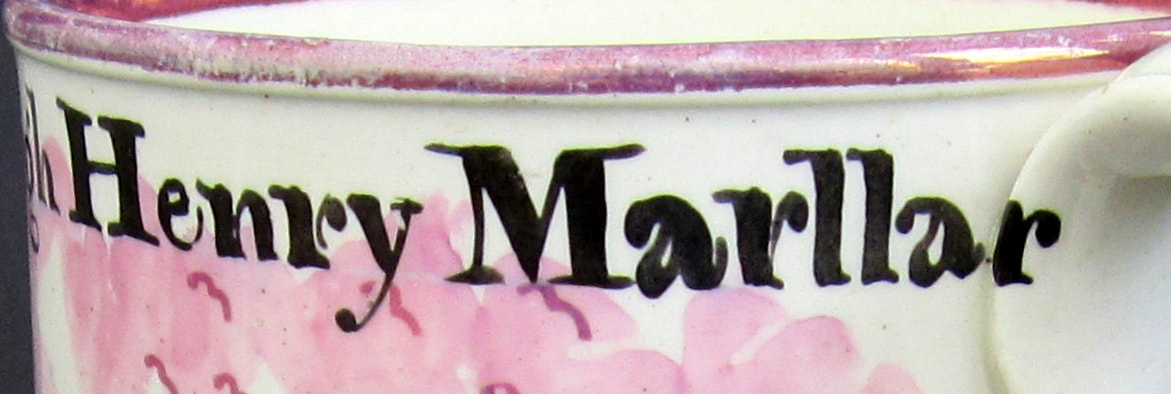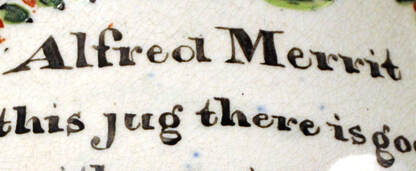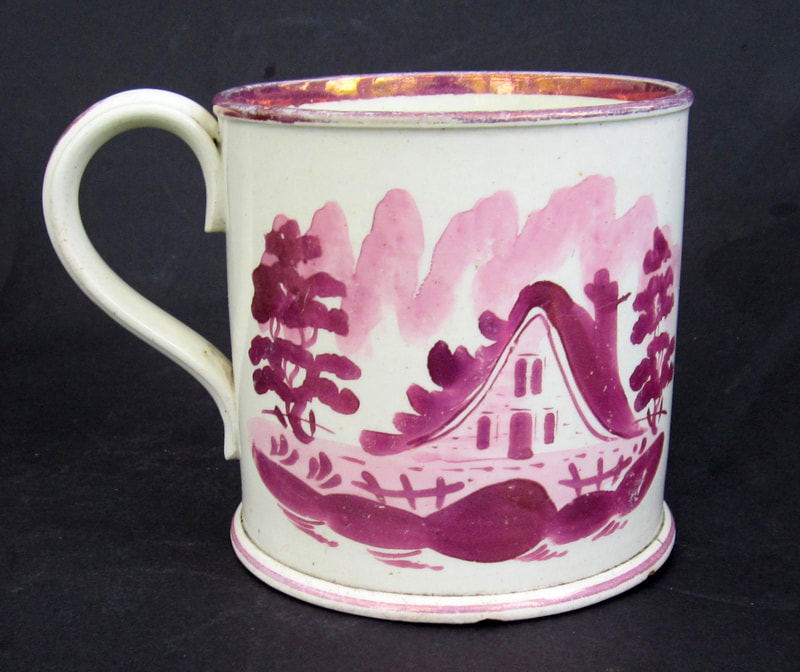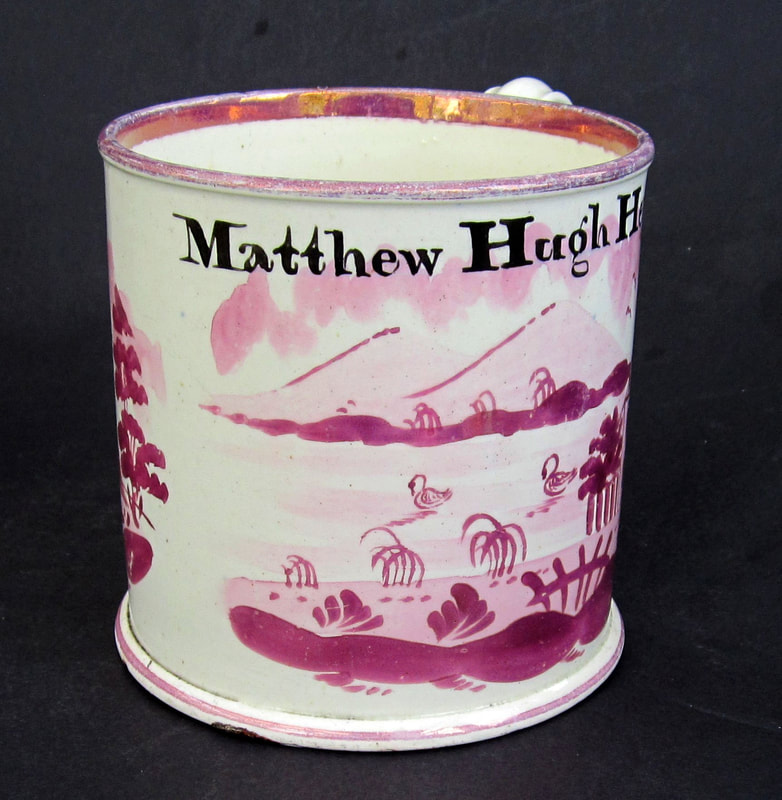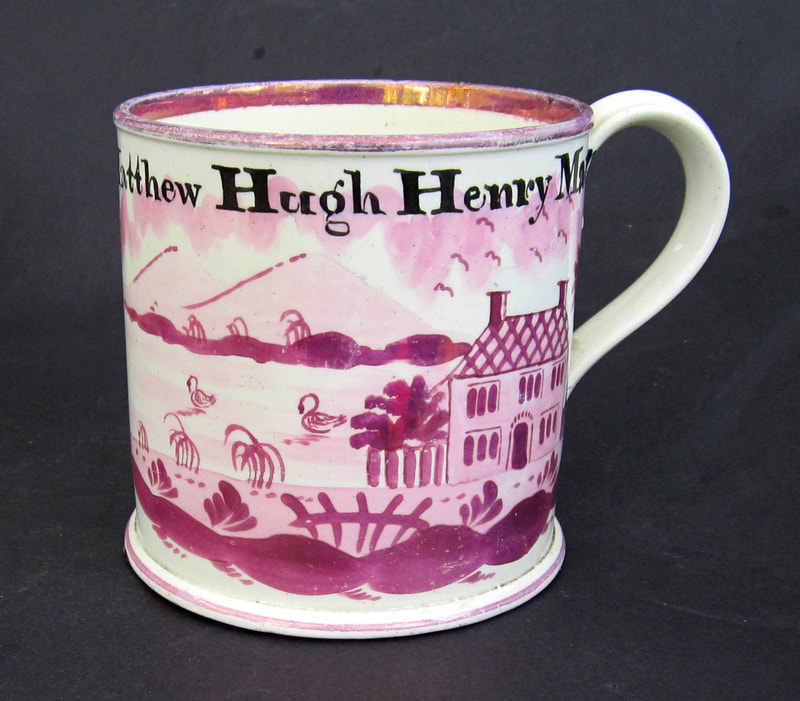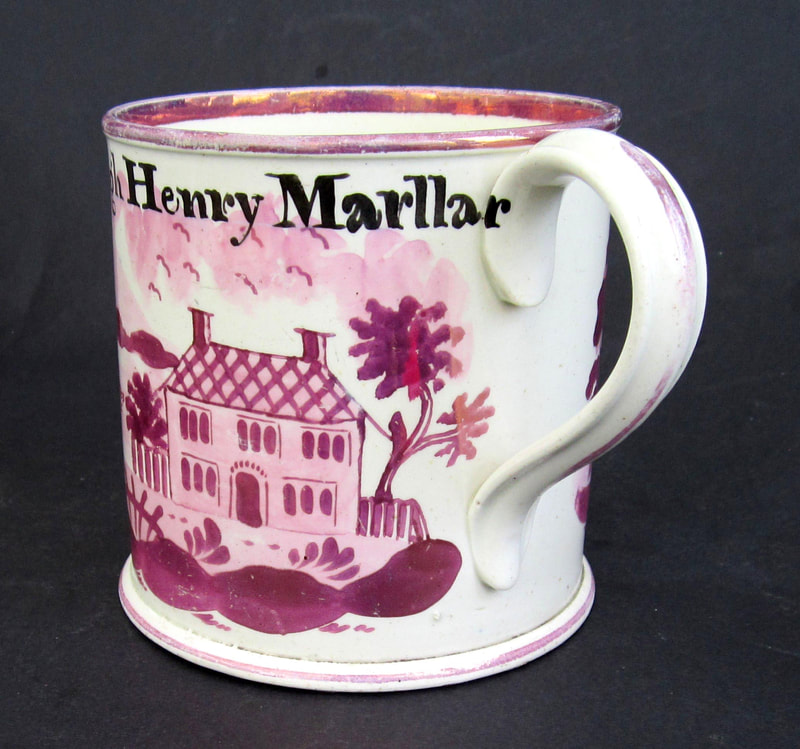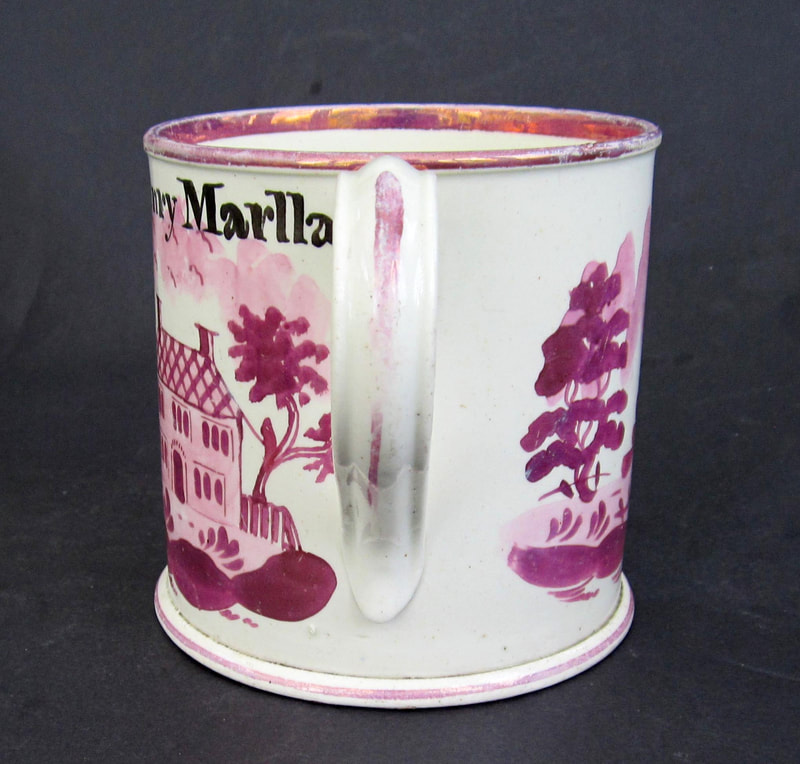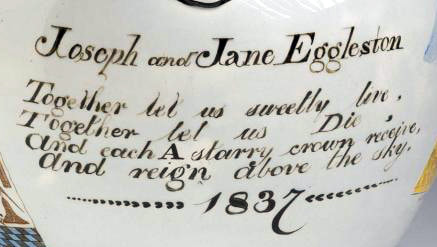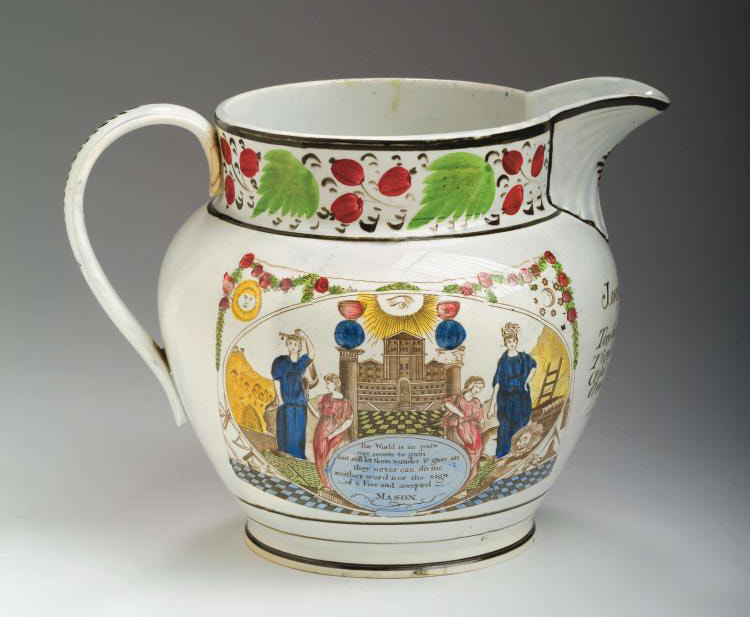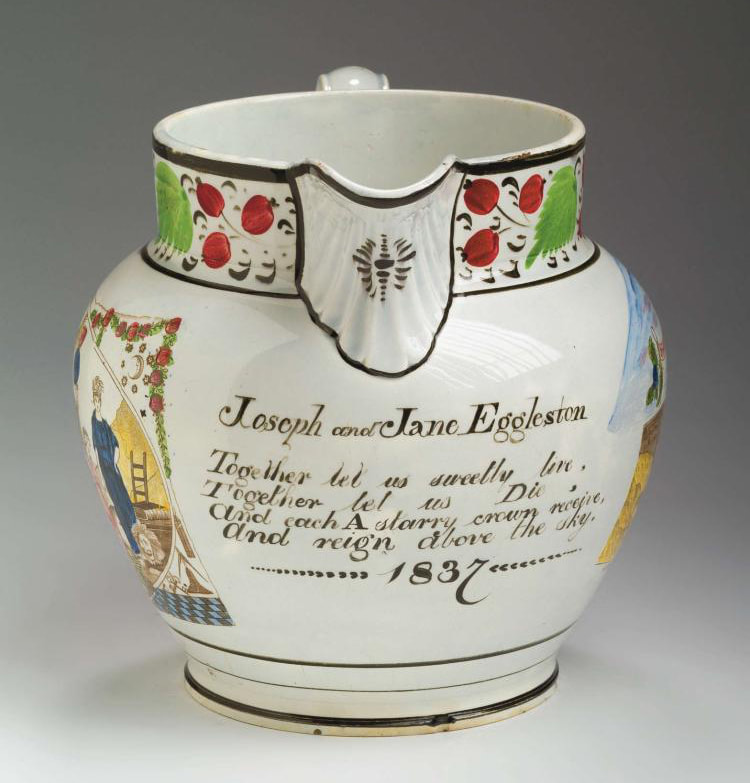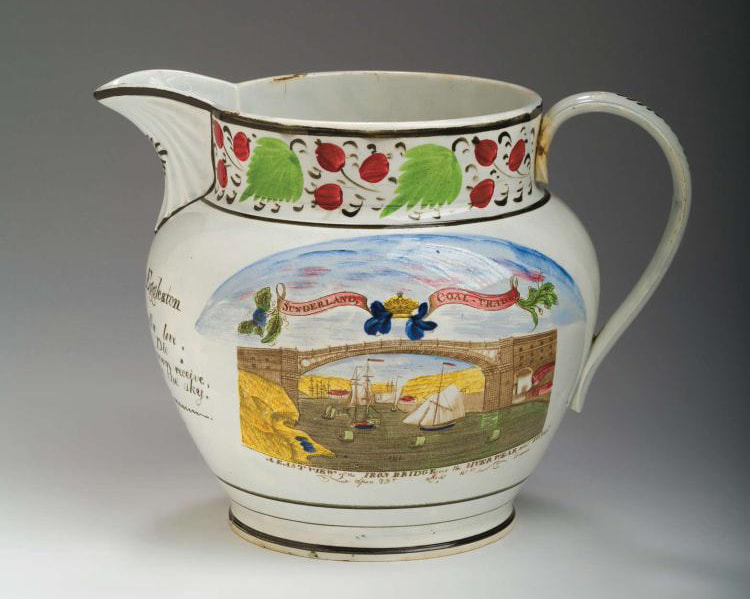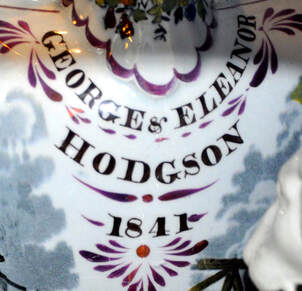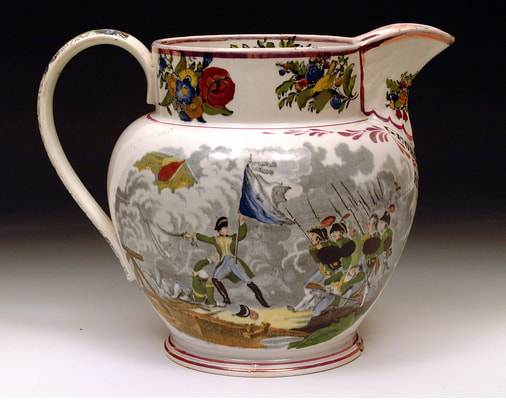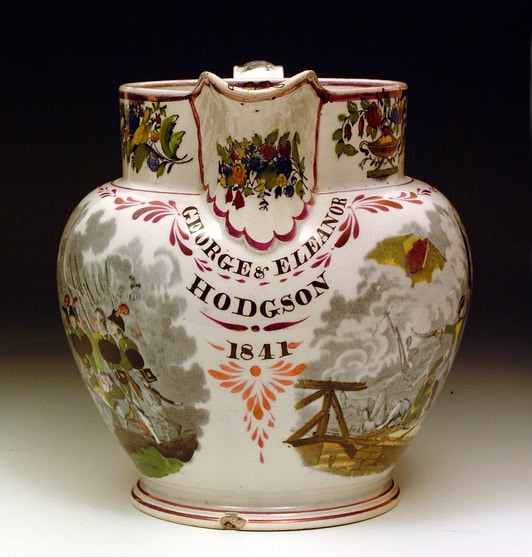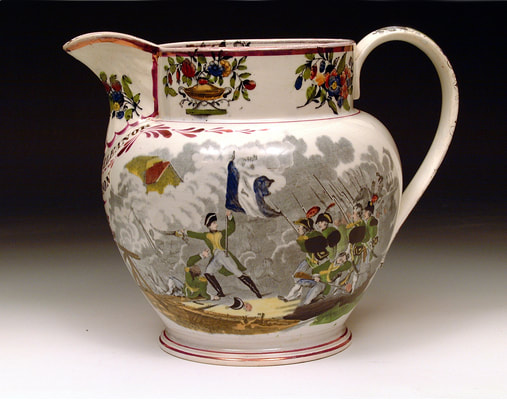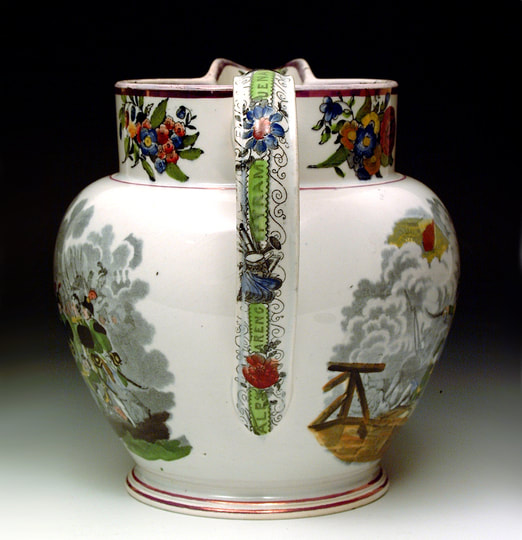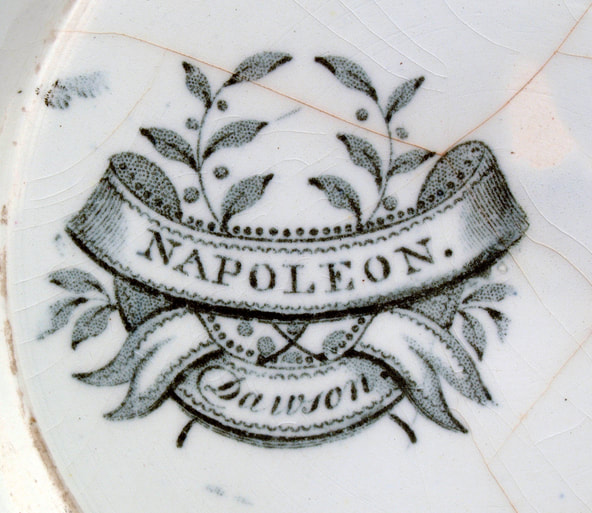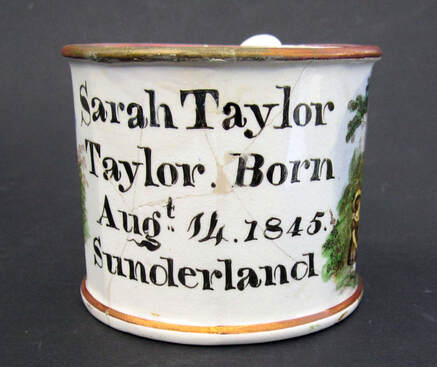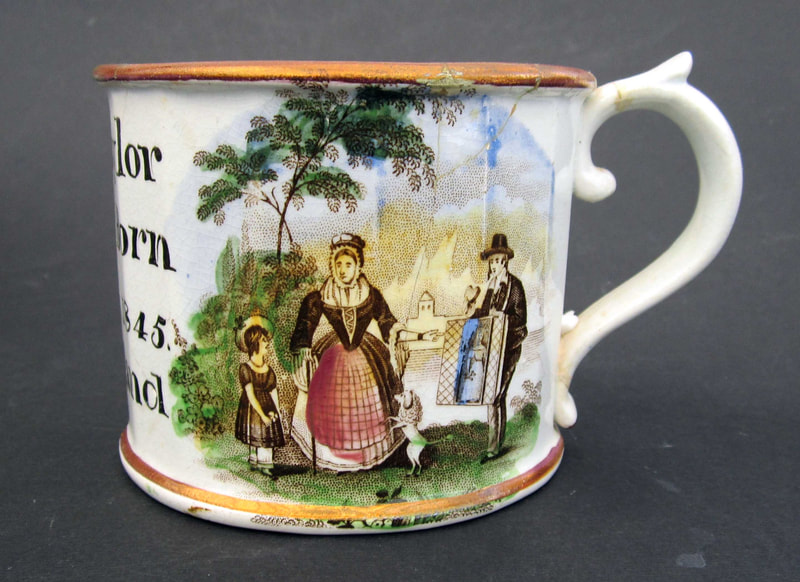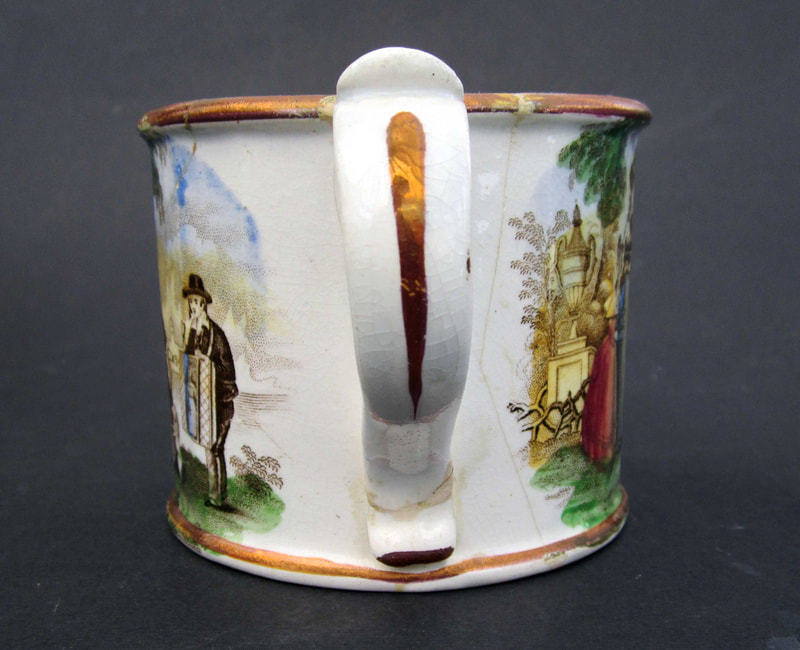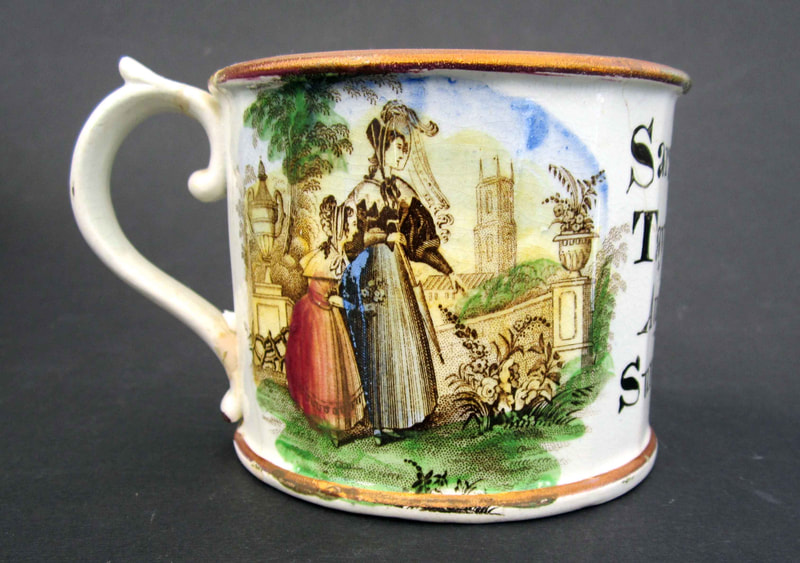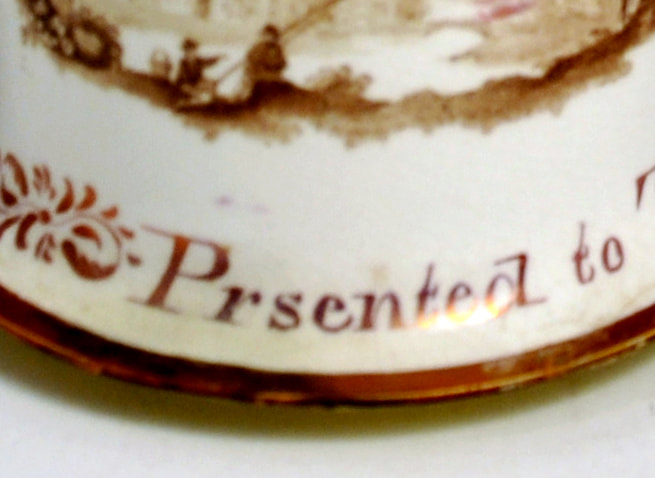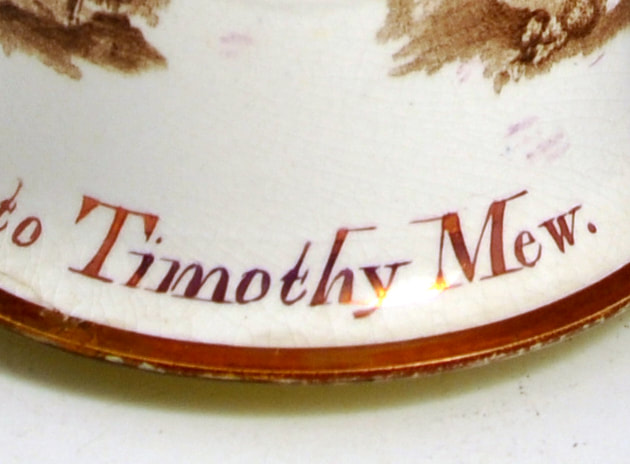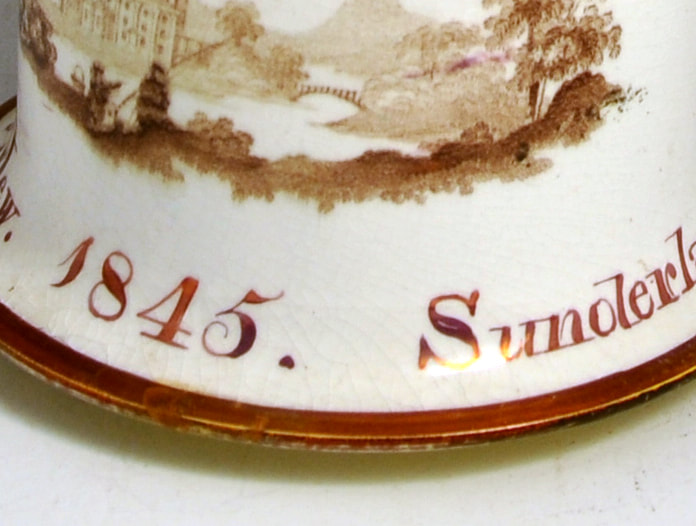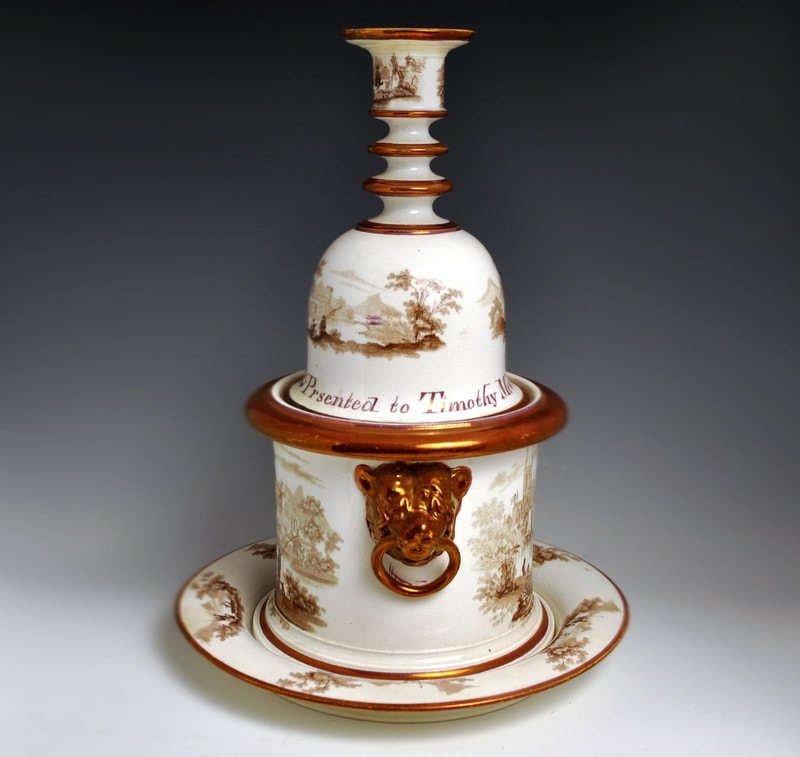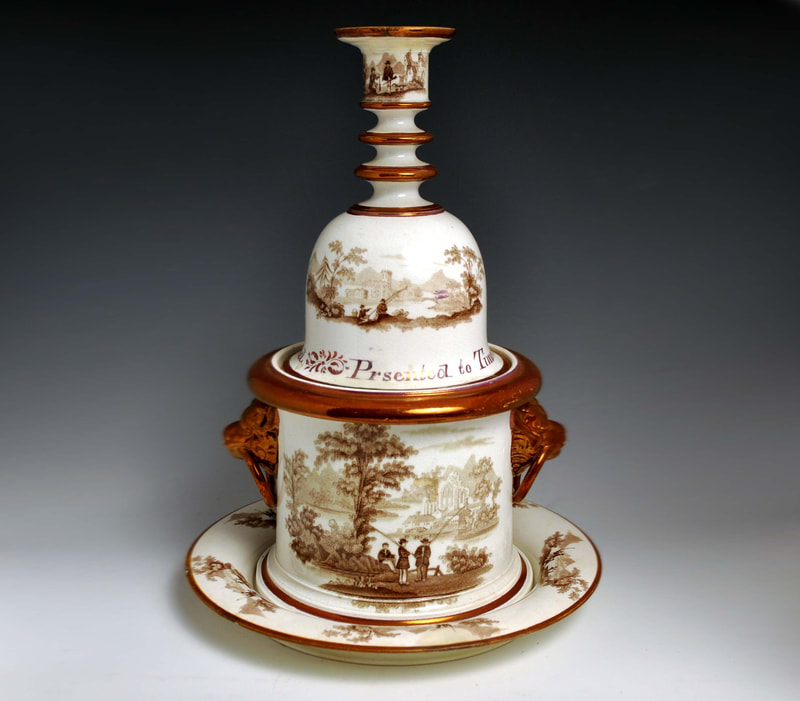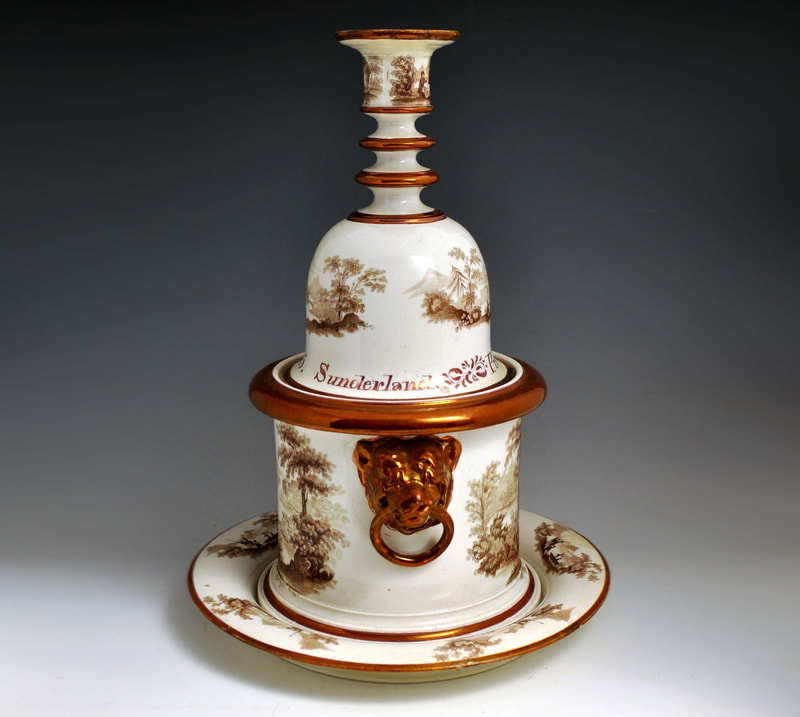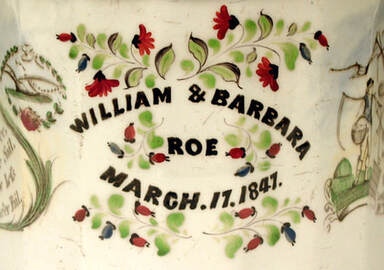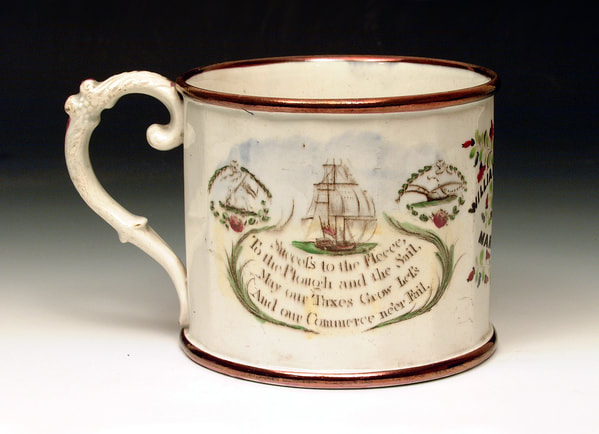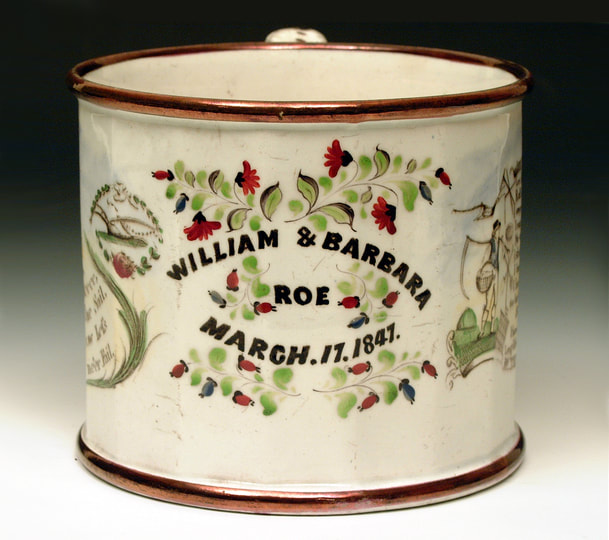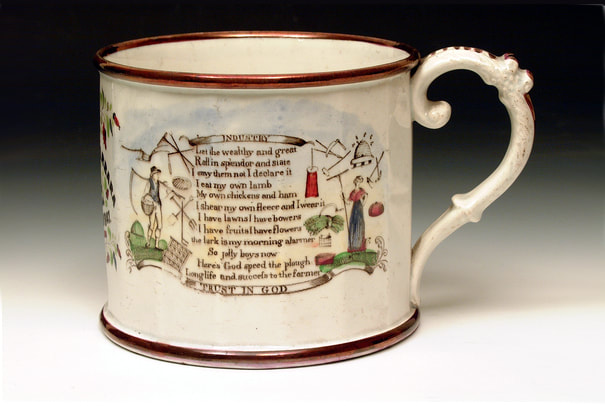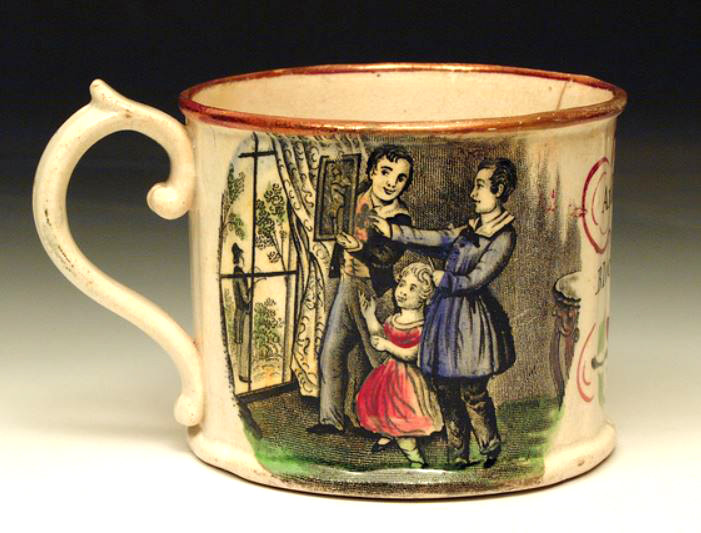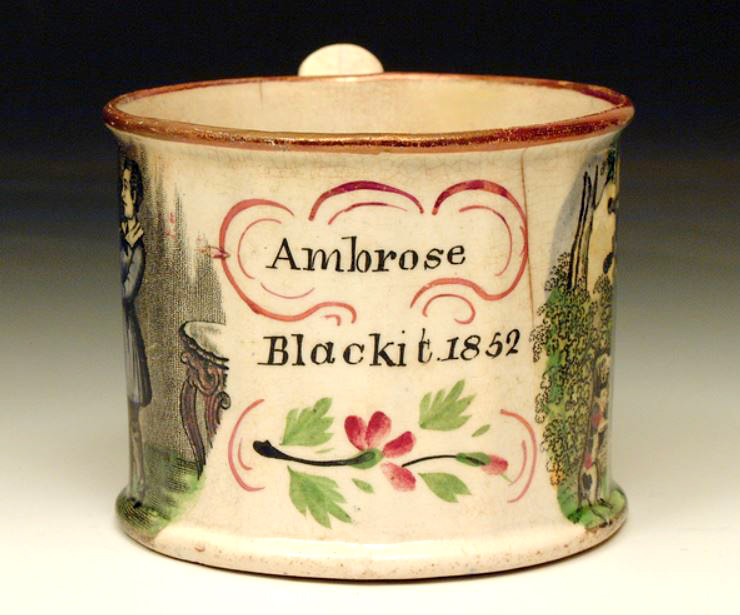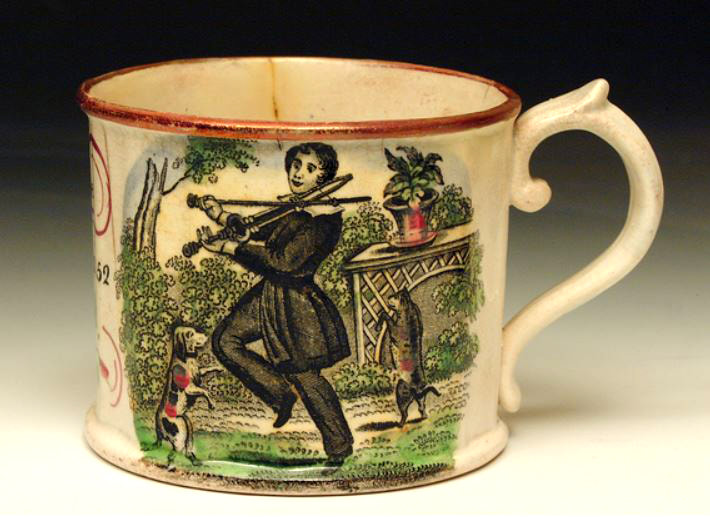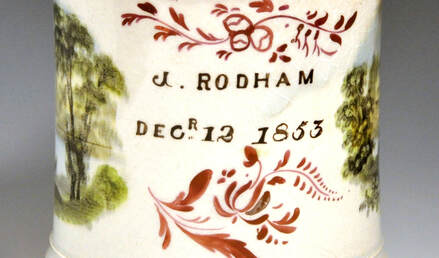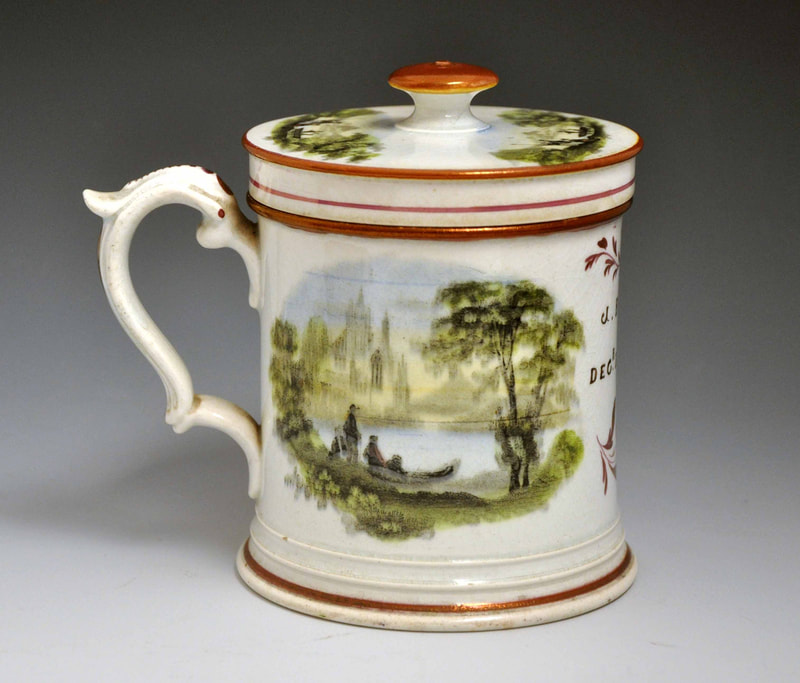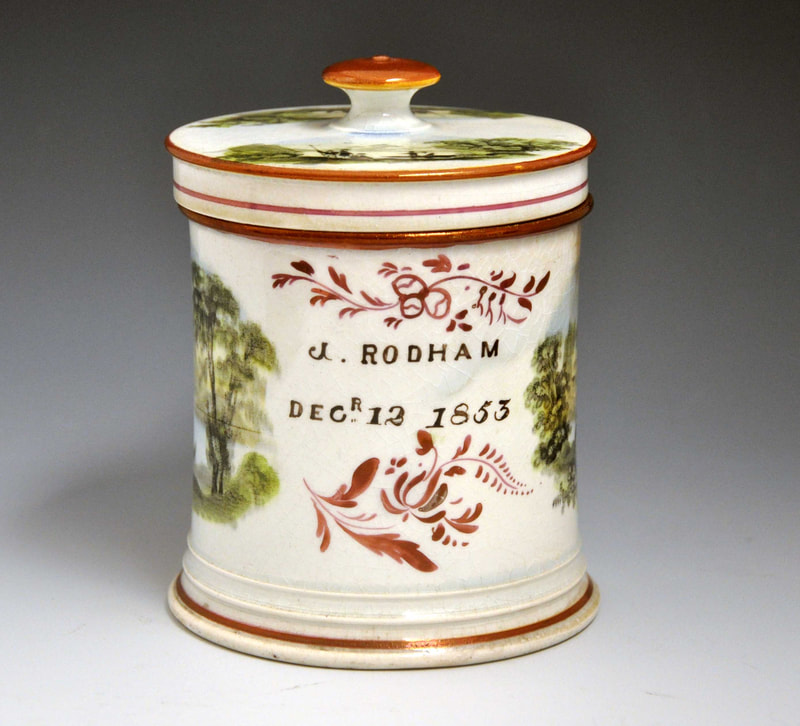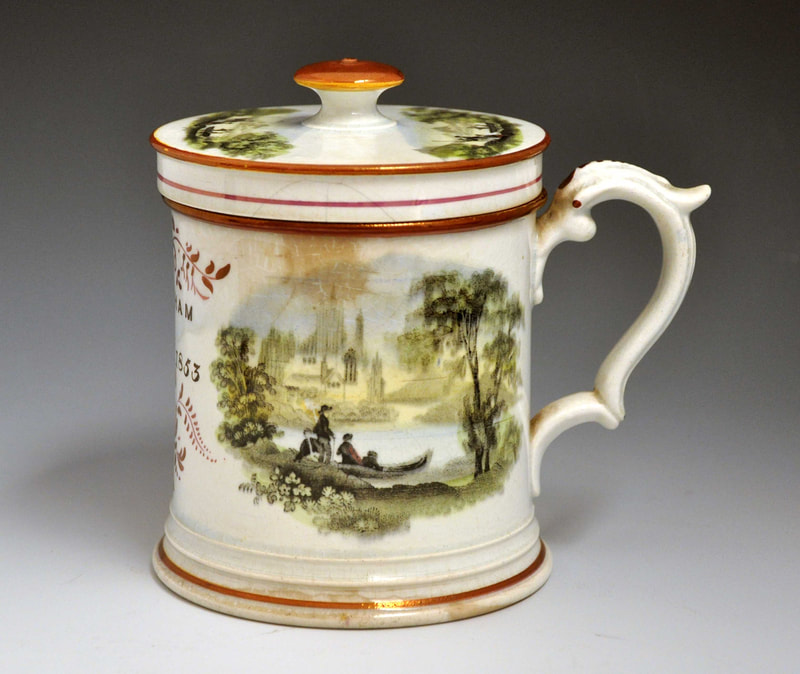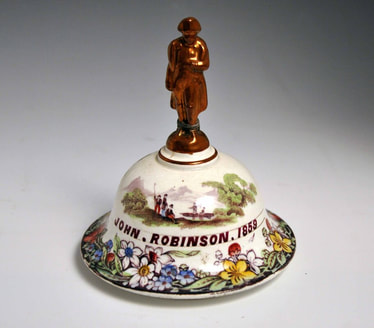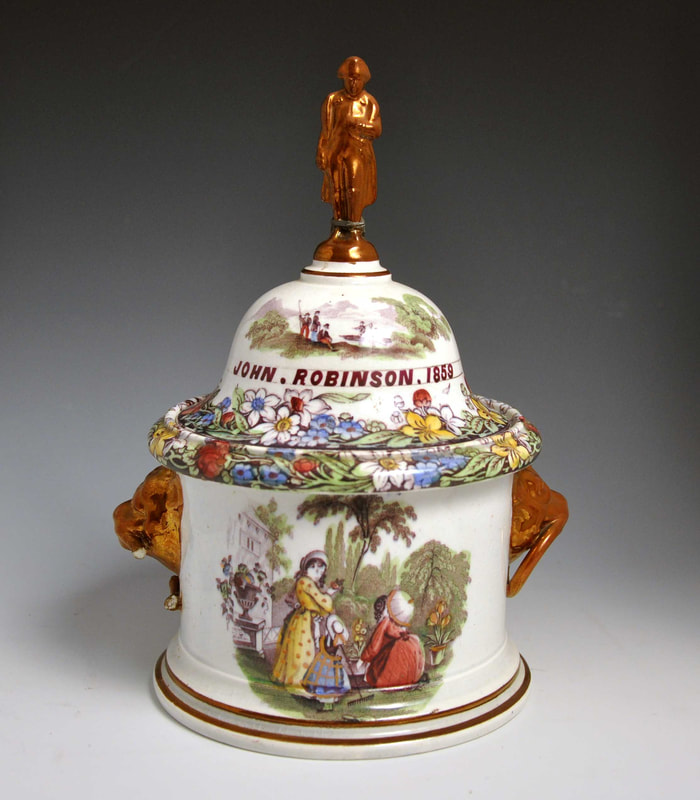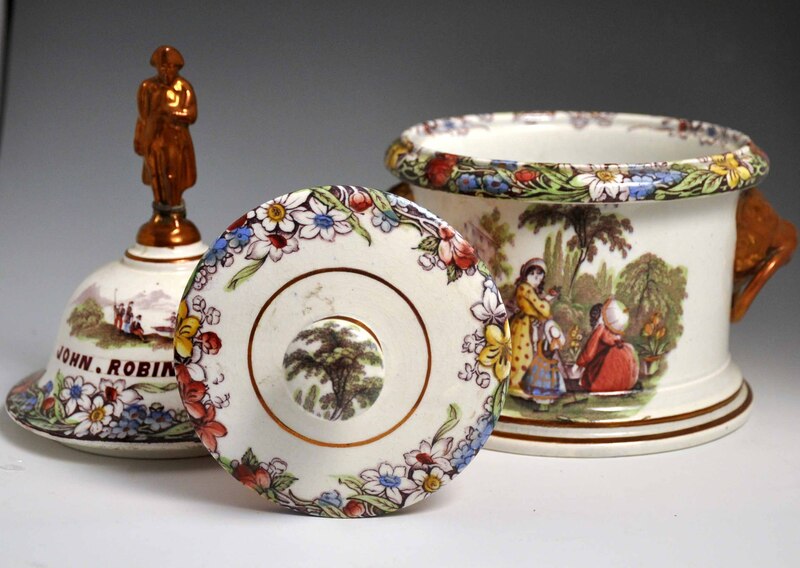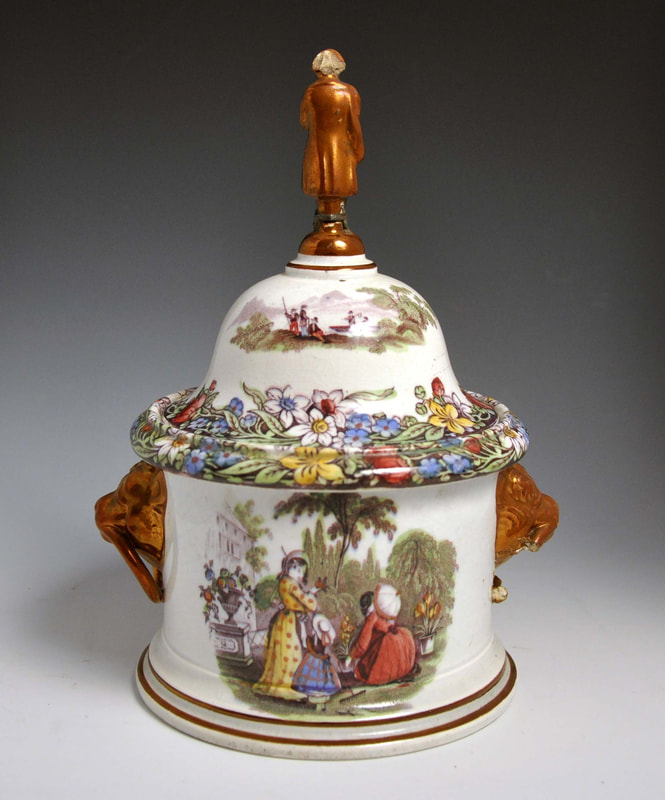Dawson inscriptions post-1830
The first jug below, dated 1834, has transfers that are firmly attributed to Dawson. The second and third are from the Sunderland Museum & Winter Gardens, Tyne & Wear Archives & Museums collection. The second, dated 1835, has a bridge transfer with a printed Dawson mark. The first two jugs have distinctive lustre decoration around the collar. The first and third have a view of the River Thames. All three have distinctive flower decoration.
A large and profusely decorated jug from the National Maritime Museum, Greenwich London collection, with a monogram under the spout.
The decoration of the collar and spout on the jug below are similar to the first and last jugs above, so I think it likely this jug was also made in the 1830s. Norman Lowe has identified that William Heeds married Ann Sprue on 9 September 1804 at Camberwell, so it appears to have been commissioned as a 30th anniversary present.
See the Robert & M Cloughton jug below, for an example with identical script dated 1835. The bridge transfer on the Cloughton jug has a printed Dawson mark.
An impressed Dawson plate, again with hand-painted enamel flower decoration and similar script.
Another, also with an impressed number beside the Dawson mark.
The following three jugs, although unmarked, appear to be decorated by the same hand as those above. They share a distinctive group of maritime transfers.
The mug below has very similar letter formations to the two jugs above. Compare the lower case letters with the details below from the jugs. The mug is attributed to Dawson on that basis.
Norman Lowe has identified a marriage of a Matthew Henry Marler at Lanchester Co. Durham in 1852, and the record gives his age as 31, indicating a date of birth in 1822 or thereabouts.
The auction catalogue states: 'In the "Durham Mining Museum Master Index," Joseph Eggleston (1825-81) is listed as "Coal Miner".' Again, the bridge transfer has a printed Dawson mark.
The enameller who decorated this jug (from the Sunderland Museum & Winter Gardens, Tyne & Wear Archives & Museums collection) would produce similar inscriptions for Moore's Wear Pottery in the 1860s.
A distinctively shaped mug with an inscription for 1845 that appears to match the bachelor set below.
The mugs above and below with moulded handles are both from the Sunderland Museum & Winter Gardens, Tyne & Wear Archives & Museums collection.
